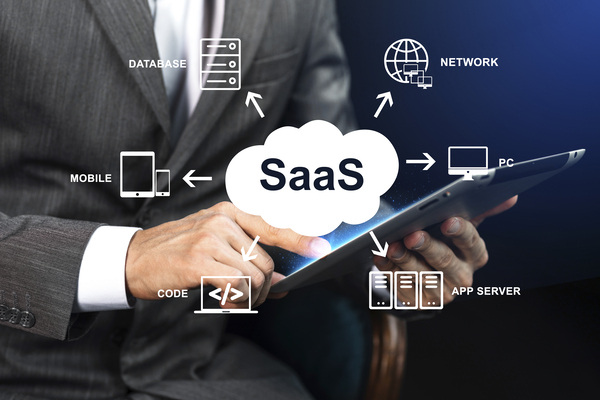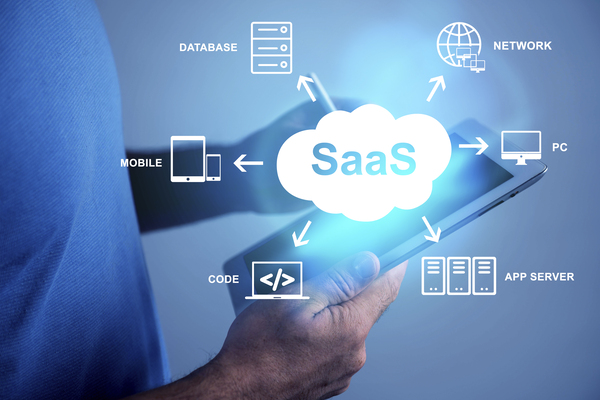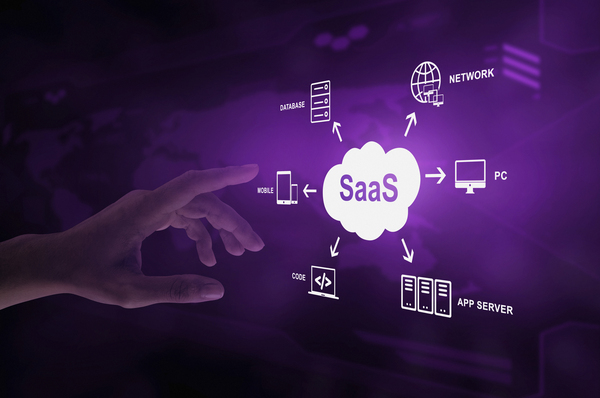In the realm of modern technology, Software as a Service (SaaS) has emerged as a cornerstone, revolutionizing how businesses and individuals access and utilize software applications. As we navigate through 2024, understanding the intricacies of SaaS is crucial for businesses aiming to stay competitive and individuals seeking efficient software solutions. What exactly is SaaS, and how does it shape the digital landscape today?
What is Software as a Service?
Software as a Service, commonly abbreviated as SaaS, refers to a software delivery model where applications are hosted remotely by a third-party provider and made available to users over the internet. Unlike traditional software licensing models, where users purchase and install software on their devices, SaaS operates on a subscription basis, allowing users to access applications through web browsers or APIs (application programming interface).
How Does Software as a Service Work?

At the heart of SaaS lies the concept of centralized hosting. Providers maintain the infrastructure, databases, and codebase necessary to deliver the software to end-users. Users, on the other hand, simply need an internet connection and a compatible device to access the application. This setup eliminates the need for users to handle installation, maintenance, and updates, streamlining the user experience and enabling access from anywhere, at any time.
SaaS Architecture:

SaaS architecture typically comprises multiple layers, including the presentation layer, application layer, data layer, and infrastructure layer. The presentation layer focuses on user interface components, while the application layer handles the core logic and functionality of the software. The data layer manages storage and retrieval of data, and the infrastructure layer encompasses servers, networks, and other hardware components.
Advantages of SaaS:
One of the primary advantages of SaaS is its scalability and flexibility. Users can easily scale their usage up or down according to their needs, often paying only for the features and resources they utilize. Additionally, SaaS relieves users of the burden of software maintenance, as updates and patches are handled by the provider. Moreover, SaaS applications are accessible from any internet-enabled device, promoting collaboration and productivity.
Challenges and Risks of SaaS:

Despite its benefits, SaaS presents certain challenges and risks. Dependency on internet connectivity can hinder access to SaaS applications in areas with poor connectivity or during network outages. Moreover, concerns regarding cybersecurity and privacy arise due to the storage of sensitive information on remote servers. Additionally, users may face vendor lock-in, where transitioning to a different provider or reverting to on-premises solutions becomes challenging.
SaaS Security and Privacy:
Security and privacy are paramount considerations in the SaaS landscape. Providers implement robust security measures such as encryption, authentication mechanisms, and access controls to safeguard user data. Compliance with industry regulations and standards further reinforces security protocols. However, users must remain vigilant and implement additional security measures such as multi-factor authentication and regular data backups to mitigate potential risks.
SaaS vs. IaaS vs. PaaS:
SaaS is part of a broader spectrum of cloud computing services, which also includes Infrastructure as a Service (IaaS) and Platform as a Service (PaaS). While SaaS delivers complete applications over the internet, IaaS offers virtualized computing resources such as servers and storage. PaaS provides a platform for developers to build, deploy, and manage applications without the complexity of infrastructure management. Each model caters to distinct needs and preferences, offering varying degrees of control and customization.
The Future of SaaS:
Looking ahead, the future of SaaS appears promising, driven by advancements in technology and evolving user demands. Artificial intelligence (AI) and machine learning (ML) are increasingly integrated into SaaS applications, enhancing automation, personalization, and predictive analytics. Additionally, the adoption of containerization and microservices architecture fosters agility and scalability in SaaS development. As businesses continue to prioritize agility, cost-efficiency, and innovation, SaaS is poised to play a central role in shaping the digital landscape of tomorrow.
Conclusion:
As we navigate the dynamic landscape of technology in 2024, Software as a Service (SaaS) stands out as a transformative force, redefining how software applications are accessed, deployed, and managed. From its fundamental principles to its future trajectory, understanding the nuances of SaaS is essential for businesses and individuals alike. How can organizations leverage the advantages of SaaS while mitigating potential risks? As we contemplate the future of SaaS, one question remains: What innovations and disruptions will shape the evolution of SaaS in the years to come?
Explained SaaS (Software as a Service) in 3-minutes:
FAQs:
SaaS stands for Software as a Service, a software delivery model where applications are hosted remotely by a third-party provider and accessed over the internet on a subscription basis.
SaaS operates on a centralized hosting model, where the provider maintains the software infrastructure and users access applications through web browsers or APIs, eliminating the need for installation and updates on user devices.
Advantages include scalability, flexibility, cost-effectiveness, automatic updates, accessibility from anywhere with internet, and reduced IT maintenance burden for users.
Challenges include dependency on internet connectivity, concerns about data security and privacy, potential vendor lock-in, and limited customization compared to on-premises solutions.
SaaS provides complete software applications over the internet, while Infrastructure as a Service (IaaS) offers virtualized computing resources, and Platform as a Service (PaaS) provides a platform for application development and deployment.
SaaS providers implement robust security measures such as encryption, authentication, and access controls to safeguard user data. However, users should also implement additional security measures and adhere to best practices.
While SaaS applications offer some degree of customization through configuration options, they may have limitations compared to on-premises solutions. However, some providers offer APIs and integrations for further customization.
Factors to consider include the provider’s reputation, reliability, security measures, scalability, pricing structure, compliance with regulations, customer support, and compatibility with your business needs and workflows.
Switching providers may involve migrating data, training users on a new platform, and ensuring compatibility with existing systems. It’s essential to plan the transition carefully and consider any contractual obligations or data portability concerns.
The future of SaaS is likely to involve advancements in AI, ML, containerization, and micro services architecture, enabling greater automation, personalization, agility, and scalability in software delivery and management.